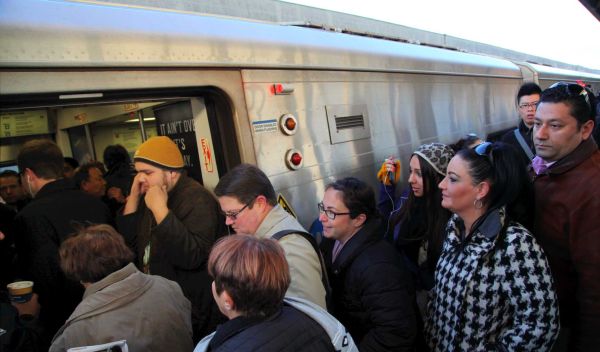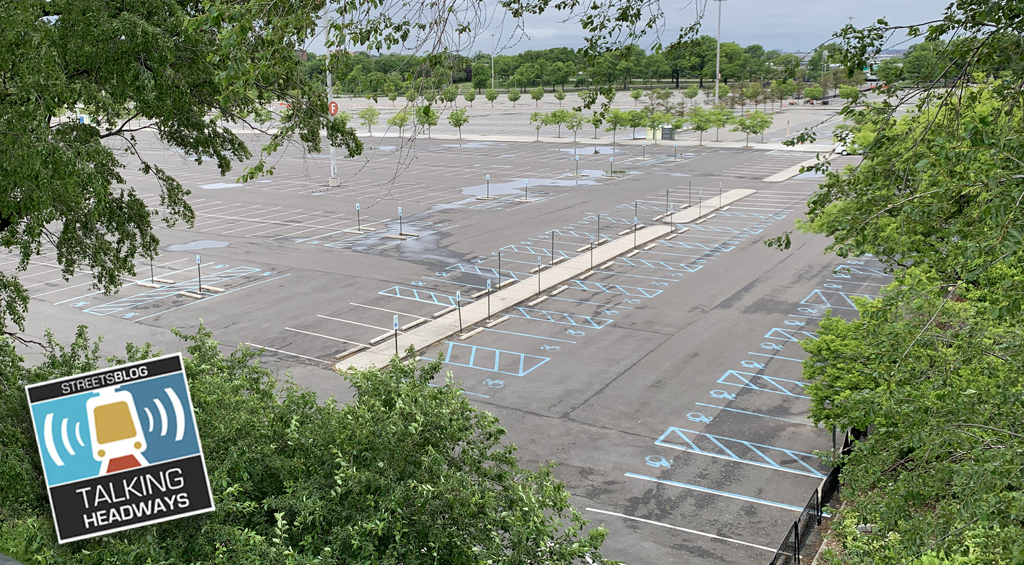Yes, federal funding for transportation is expected to go negative before Congress is even due to pass a new bill. And yes, transit systems had a tough few years, cutting service and raising fares as the recession took a bite out of revenues. But guess what? In a credit outlook report released this week, Moody’s credit rating service says the outlook for the transit sector is positive.

APTA’s release of new transit ridership numbers, showing that the number of transit trips has reached a level not seen since 1956, was the impetus for the report. “Strong ridership is credit positive for US mass transit authorities,” Moody’s notes.
Moody's credit outlook reports are available only to subscribers.
Still, high ridership doesn't guarantee strong financial footing for transit. The farebox covers only 36.5 percent of transit operating expenses nationwide. During the recession, rising ridership was actually a stress on the system, since it coincided with plummeting sales tax revenues as consumer confidence fell. But the stars seem to be aligning now.
Sales tax revenues are healthier, growing about 5.5 percent last year. Some agencies are restoring service they were forced to cut. Voters continue to approve transit funding measures by a large majority. There’s a flurry of activity on transit expansion and renovation.
Most U.S. transit systems issue bonds secured by sales tax revenues, though some are backed by net operating revenues. Both of those are in pretty good financial shape right now, said Nick Samuels, vice president and senior analyst at Moody’s. While Moody’s doesn’t issue a rating for the transit sector overall, the average rating of the 42 agencies that issue bonds backed by sales taxes is an AA2 -- the third highest possible rating.
Rising ridership has financial benefits outside of just farebox recovery, too. “If more people in the city are utilizing a system, the city at large has more of an incentive to keep the system running,” Nowicki said. “If a city has a heavy reliance on transit that only gets heavier, the political environment would favor it. Any proposed tax increases are more likely to be approved by a tax base that actually uses the system than one that does not.”
Agencies are relying more and more on local sources of funding in the absence of a robust federal investment. But agencies are also united in saying they can’t go it alone.
Isn’t Moody’s concerned about Congress’s total paralysis on the funding question? Sure, APTA’s asking for $100 billion over the next six years, as Moody’s mentions in its report, but the reality is likely to be a lot less than that. There’s no consensus on Capitol Hill for a mechanism to sustain even current levels of $10.7 billion a year. Moody's did hear from transit agencies that major projects might be delayed as the federal picture stays blurry.
But none of that changes the positive outlook.
“Grants are certainly an important source of revenue,” said Nowicki, “but we view dedicated local taxes, like sales taxes and transfers from local governments, to be a more important source of revenue for these transit systems, especially for their operations.” Federal funds are almost exclusively for capital expansion.
Not that expansion isn't important. “We like to see systems that are in high demand and that are expanding,” Nowicki said. “It shows that their business model is effective and that people in that service area like what they’re getting.” But recent trends show that the transit sector is at least back to a state of fiscal health.
When federal loan programs like TIFIA look only at credit-worthiness as its only selection criteria, transit’s stellar credit rating puts it in good stead to receive those low-interest loans.
Meanwhile, Moody’s upgraded the outlook for toll roads in December from negative to stable, noting, “The rate of traffic growth is slowing down overall and so the slower, albeit more stable growth rates reflect a 'new normal.'"
When driving rates, and not just transit ridership, are back to levels last seen in 1956, it will be cause to celebrate.





